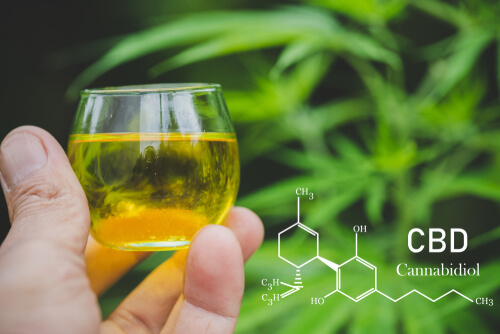
The famous therapeutic effects of CBD can be explained by conducting in-depth research about cannabidiol to understand the molecular mechanisms of the interaction of CBD with the human body. The studies would contribute a major share in exploring the complete potential of CBD and making better use of it.
Human Body And Cannabinoids
The human body produces cannabinoids on its own and the endocannabinoid system is concerned with the production and processing of cannabinoids. This 1992 discovery was quite a breakthrough and it encouraged medical experts to go ahead with cannabis research leading to the discovery of more of its medical potential.
Several physiological processes like mood, pain, immune functions, as well as cognition and body metabolism are governed by the endocannabinoid system. CB1 and CB2 are two major types of endocannabinoid receptors and the brain regions that regulate memory and motor activities are the primary locations of CB1 receptors.
CB2 receptors are usually found in the immune cells and bone marrow cells and their activation creates an anti-inflammatory immune system response.
How Does CBD Influence The Endocannabinoid System?
The cannabinoid, THC binds to the CB1 and CB2 receptors but CBD works in a different way. Anandamide is an endocannabinoid produced in the body, which is known as the molecule of bliss due to its ability to lift the mood. The structure of anandamide is similar to that of THC and due to this, it binds to the CB1 and CB2 receptors of the endocannabinoid system.
The mood-enhancing effects of anandamide suggest that it might be involved in various other processes like memory, pain, and appetite. A 1998 study discovered that anandamide has the potential to slow down the growth of breast cancer cells.
The enzymes FAAH is responsible for breaking down anandamide and the drop in anandamide levels have negative effects on various body functions. CBD inhibits FAAH and produces mood-lifting effects.
CBD Targeting The Serotonin System
The serotonin 1 A receptor has functions of anxiety and stress control and CBD targets this receptor and helps relieve anxiety and stress. The interaction of CBD with the serotonin system indicates its possible application in the treatment of anxiety, stress, and post-traumatic stress disorder.
Interaction Of CBD With The Vanilloid Receptor
The vanilloid receptor type 1 or TRPV1 is another receptor that CBD activates. TRPV1 is associated with the sensation of pain and inflammation and several studies have suggested that there exists a positive correlation between the higher levels of TRPV1 and chronic pain disorders like arthritis.
Higher the levels of TRPV1, worse will be the pain symptoms and CBD achieves pain relief effects by producing an inhibitory effect on these receptors.
Getting a better insight into the molecular basis of CBD activity in the body helps in using the cannabinoid to its full potential.

